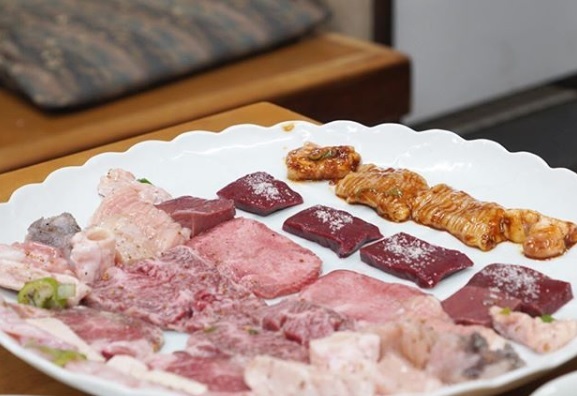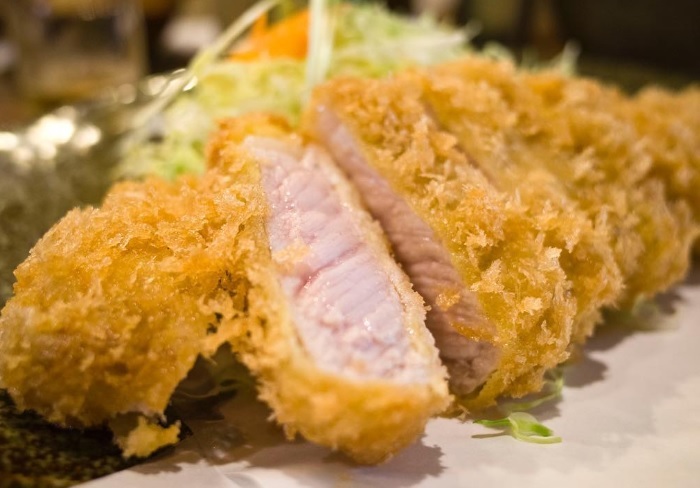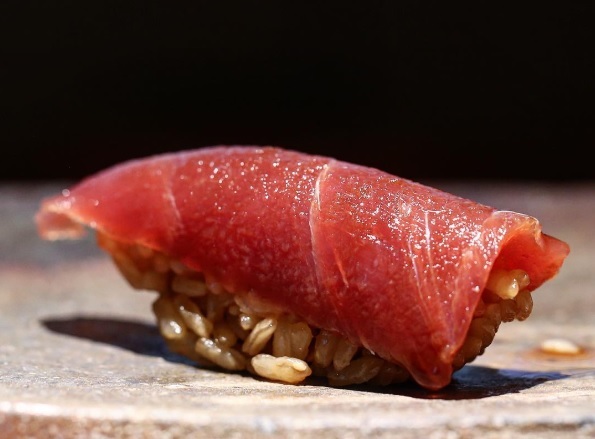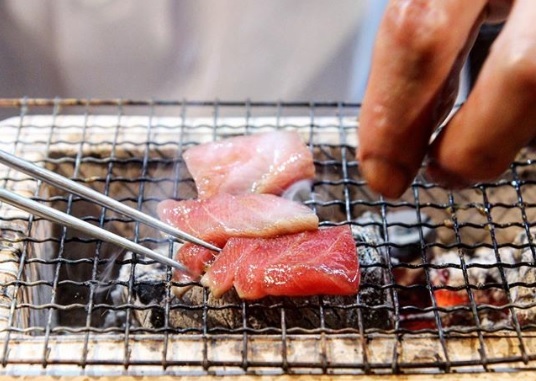The Best Restaurant in Okinawa
Most people love seafood in the winter, but the brutal weather, not so much. I observed that many Japanese people don’t really like cold weather. Actually, I should say that most people in the northern hemisphere don’t like cold weather at all. Then, wouldn’t it be nice to live somewhere warm all year round? In this regard, people who live in Okinawa are blessed with the wonderfully warm weather above 20° C all year round.
Okinawa is the southernmost prefecture in Japan. This group of islands is between Kyushu and Taiwan. Their food is a far cry from Taiwanese food and the Min cuisine of Fujian (Hokkien food). While in Hokkaido, Kanto, or Kansai, I’ve never heard any diner mention Okinawan food. At most, people might mention tropical fruit or produce from Okinawa like sugar canes, pineapples, papayas, etc. Black syrup or kuromitsu from Okinawa is said to be the best. Desserts aren’t my thing, but kuzukiri, a Kyoto dessert made from kudzu starch, with Okinawa kuromitsu is something I really miss.
I wondered why nobody I know had ever mentioned Okinawan food until one day when I came across a gentleman from Naha. Naha is the capital of Okinawa Prefecture. I then had the opportunity to get more information and to confirm my short to-visit list.
What I didn’t understand was that I thought Okinawa would be another heaven of seafood just like Kyushu, with its own local ingredients, like yagara and aka uni.
Surprisingly, the locals love their pork so much. Iconic dishes there are rafute (a soy-sauce-simmered pork belly) and mimiga (sliced pig ears). I know many diners would squirm at the thought of eating pig ears. However, a good one is really tasty. The best one I had in Japan wasn’t in Okinawa, though. The best one, called Saitamaya, is surprisingly in Saitama and is reviewed once by Leo’s article in TTT on the best restaurants in Tokyo without reservation. The chef there told the girl sat next to me how consuming his pig ears dish will replenish her skin with collagen and that she would be pleased to look in the mirror the next morning, drawing giggles from her.
As far as sushi is concerned, I searched and checked with multiple reliable sources as well as tried local sushi restaurant myself in Naha to get firsthand information.
I have to say, even among the best ones, I’ve found nothing worthy unlike Kyushu, which has so many nice sushi restaurant. The fish markets in Okinawa can’t match Toyosu. My epiphany came when I realized the warm current around Okinawa might not be good for seafood for making sushi, unlike the cold current around Honshu.
After trying all the restaurants on my shortlist, I’d like to present to you my findings so TTT readers don’t need to go through trial and error.
Mie
Mie opened its doors in 1958. Surely, it has a lot of history, and it served as one of the most respectable restaurants in Okinawa. The founder took pride in an exquisite cuisine enjoyed by aristocrats and royalty descending from the last king of the Ryukyu Kingdom.
The restaurant is considered large, with a seating capacity of about 20 people in all the rooms and a table seating arrangement. I didn’t notice a counter. They accepted solo diners. The decoration is nostalgic, so I felt as though I was up-country and stepping back in time. The staff are very polite, although it’s different from the hospitality in Tokyo or Kyoto, where close interaction with the chef-owner is quite common.
I mentioned how much the locals love their pork; all the meats at Mie were pork. My meal started with a small dish of pork with miso and ginger. It got very nice umami. Then, I was served a bowl of clear soup with a sliced pig stomach. It was so tender with no off-putting smell. They must have spent hours prepping it. This reminded me of pig stomach soup in Chaw Chou although the soup tasted totally different. Nevertheless, this clear soup also got a very deep taste. Subsequently, a hassun filled with local delicacies, including squid and kamaboko, was presented. The carved cooked squid was succulent and tender. Jimame tofu, made of peanut, was fragrant and delicate. This resembled the gomatofu, tofu made from sesame, that I had in Kyoto. Rafute, the assorted stewed pork rib and pork loin with goya, was so soft and fell apart without me needing to chew.
If you have never had goya before, goya or bitter gourd is Okinawa’s famed superfood hailed to lower blood sugar and said to be the secret to longevity as Okinawa people have the longest lifespan. Younger diners might be discouraged by the bitter taste. It is an acquired taste enjoyed by mature diners. I enjoyed it so much that I brought goya condiment, the Furikake powder, to sprinkle on my rice. Then, I complete my meal with Kokutou Kanten, agar with black sugar, as the final dessert. Unlike refined sugar, which is considered empty calories without any nutrients nor vitamins, black sugar has the raw taste of sugar and a hint of bitterness, which was so nice.
This is one solid meal cooked with effort and care. However, it’s got the local feeling and might not suit everybody. If you want expensive flashy ingredients or lots of seafood, Okinawa cuisine might not cut it for you. Dinner at Mie starts at 9,000 yen, and the most expensive course is 15,000 yen. Booking is relatively easy. I booked my seat only a week ahead. This restaurant is revered by the locals and is a place you should try once if you happen to be in Okinawa.
http://ryukyu-mie.com/comany.html
◆Ryukyu-ryori Mie
Address:1-8-8 Kumoji, Naha-city, Okinawa
Phone:098-867-1356
Opening hours:12:00~14:00/18:00~22:00
Closed: Sunndays
【Bonus】 the best Okinawa soba -Ten to Ten (てんtoてん)
To call it soba is rather misleading. Okinawa soba is much more similar to Udon, although I found it more curly. Their soup is made from dried fish and pork. It tastes closer to Udon soup. This is unlike noodles in Taiwan, which use beef and use soy sauce as the soup base.
The Italian loves his or her pasta ‘al dente’; likewise, the locals here love their soba ‘Koshi ga aru’, which means the noodle that has body. A noodle that has body has to be chewy with a firm texture. Cooking the noodles makes the noodles soft. So, the skilled chef will make sure they are not cooked to the core, and the diner has to eat his noodles quickly before the heat does its work. This texture would be considered masan (“delicious” in the local dialect).
Ten to Ten is a big house Okinawa soba restaurant with Japanese-style seating and tables that seat 50 diners. Still, it requires some waiting due to its popularity.
I love how the noodles were cooked, as I always like my noodles harder in the core. I can’t stand soggy noodles. This coincides with my personal preference. The soup is light and delicious. It is perfect as a quick lunch. Although the place is busy, its staff is very friendly.
◆Ten to Ten
Address:4-5-2 Shikina, Naha-city, Okinawa
Phone:098-853-1060
Opening hours:11:30~14:00
Closed: Mondays, Saturdays and Sunndays
Some Snippets:
1. On local drink: Awamori is a popular local alcoholic drink. It is made from long grain Indian rice. Unlike sake, awamori is made by distillation (just like Korean shōchū). You might spot habushu, a version of awamori featuring venomous snake in the bottle.
Snakes, preferably venomous ones, are used. Habu is a venomous snake found in Okinawa. So, watch out when going around the island. When preserved in awamori, their venom proteins are probably unfolded by ethanol. If you visit Vietnam, China, or Taiwan, you might come across bottles of liquor and some animals in a bottle, e.g., scorpion, reptiles, seahorse, etc. Some people believe these drinks are an aphrodisiac.
The most popular way to drink awamori is with water and ice. Many Japanese from Honshu would find this strange. This is the same when Japanese visit SE Asia and find the locals in those hot countries drinking their beer with ice!
2. Caviar of the sea. There’s a type of seaweed called Umibudo or sea grapes growing around that area. This is a very interesting ingredient in Okinawa. It pops like caviar, so it gives an exciting sensation. I tried this outside Okinawa but not very often. Chef Amano of Tenzushi served this in his course. I might have gotten it at one of the Sushi Sho restaurants, too.
3. One of the best aquariums in the world. Although Okinawa isn’t the place for good sushi, fret not. You can have the best aquarium experience watching whale sharks and manta rays in the gigantic water tank. Churaumi Aquarium here and the one in Osaka are truly world class. If you are interested in marine science, don’t miss it.
Writer:Localtaste
Local taste had taken a long journey searching for delicious meals long before the dawn of social media, roaming from one city to another from the Far East to the west, over 160 cities in four continents and more than 400,000 miles during the last 37 years.
His dining spots over thousands of restaurants range from eating in a hole in the wall in Asia to all ten Michelin 3-star restaurants in Paris. More than decades was spent on chasing for perfect xiao long bao.
Because he is not in food business nor food writer, his article won’t be found elsewhere but exclusively on tokyotabletrip.com as a tribute to Leo Saito’s altruistic deed to help international visitors discover the beauty of Japanese cuisine.
Register account first.
Register










Comments 1
1
Leo Saito
chief editor, TokyoTableTripThis article introduces a restaurant where you can enjoy Okinawa's traditional food culture.
Please, by all means, consider visiting if you are planning a trip to Okinawa.